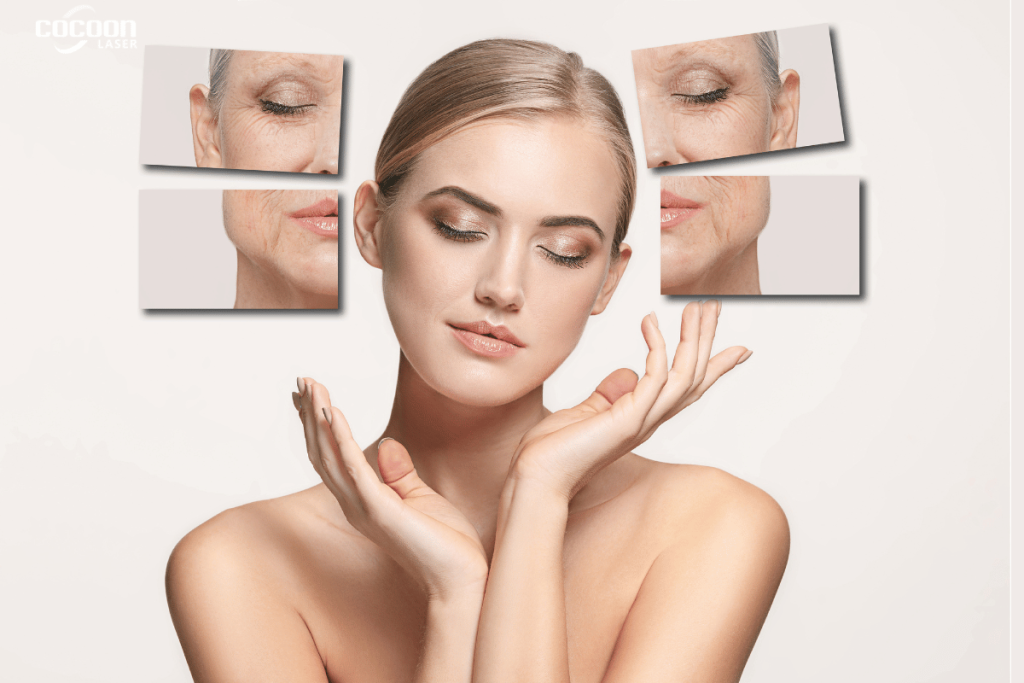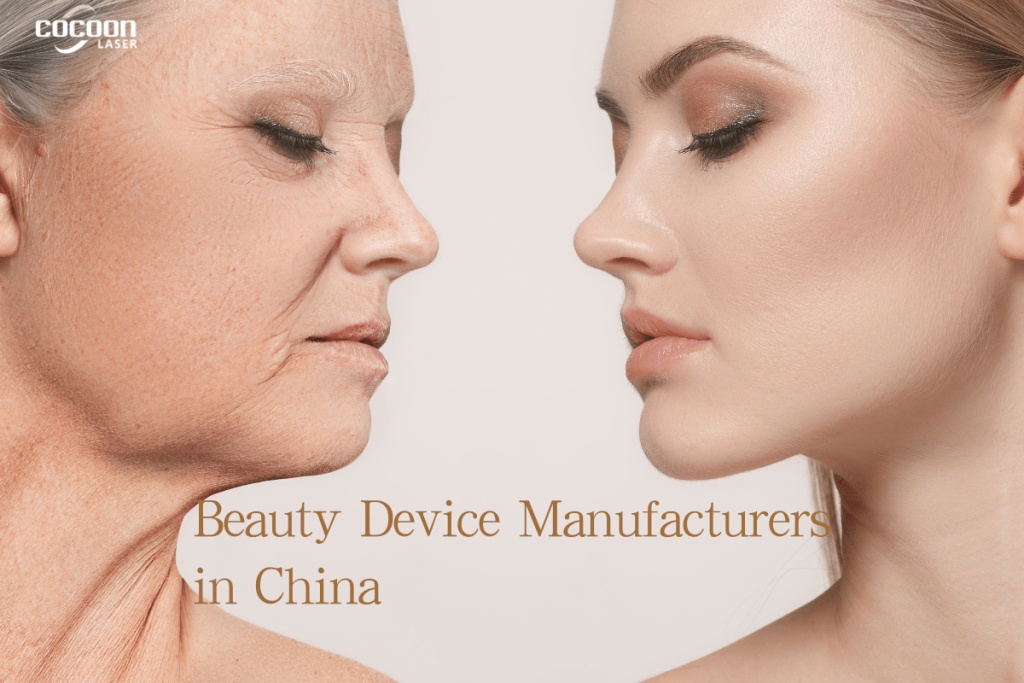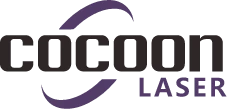How Can I Treat Fine Lines and Wrinkles Effectively?
Fine lines and wrinkles are one of the most common reasons people start thinking seriously about skincare and in-clinic treatments. The challenge is that ageing isn’t caused by a single factor, and there is no single “miracle product” that can erase every line overnight. Effective treatment is about understanding why these changes appear, then layering daily habits, medical-grade skincare, and the right energy-based procedures in a logical way.
Below is a practical, dermatologist-backed overview of what actually drives fine lines and wrinkles, how to treat them realistically, and where advanced fractional laser platforms – including dual-wavelength systems like Lav Dual 1927nm + 1550nm from COCOONLASER – fit into a long-term anti-ageing plan.
Why do fine lines and wrinkles appear?
Dermatologists generally divide skin ageing into two big buckets:
- Intrinsic ageing – the natural, genetically programmed slowdown in collagen and elastin production.
- Extrinsic ageing (photoaging) – damage driven by UV exposure, pollution, smoking, stress, poor sleep and diet.
A Singapore-based dermatology group explains that as we age, the skin gradually loses collagen and elastin – the proteins that keep it firm and resilient – and this natural decline is often accelerated by sun exposure, smoking, chronic stress and poor nutrition. Over time, the skin becomes thinner, drier and less able to “bounce back,” so expression lines eventually turn into permanent creases.
A dermatologist interviewed by Skincare.com puts it very simply:
“Fine lines and wrinkles can occur as a result of decreased collagen and elastin, which can occur with age and UV exposure.”
In other words, collagen loss + elastic fibre damage + repeated facial movement + environmental stress = visible lines.
UV radiation is one of the biggest drivers. The Skin Cancer Foundation notes that UVA rays penetrate deep into the dermis, damaging collagen fibres and promoting abnormal elastin and enzymes that further break down the skin’s structure, a process known as photoaging.


Lifestyle compounds this:
- Smoking and air pollution increase oxidative stress and accelerate collagen breakdown.
- High sugar intake promotes glycation end products (AGEs) that stiffen collagen and make skin less elastic.
- Chronic stress and poor sleep raise cortisol and impair repair processes, which also harms collagen over time.

The result: fine, shallow lines at first (around eyes, mouth, forehead), which deepen into more obvious wrinkles as collagen reserves continue to decline.
The basic pillars of treat fine lines and wrinkles effectively
Most dermatologists now talk about a multi-layer, long-term strategy rather than a quick fix. New York dermatologist Dr. Whitney Bowe summarises it by saying collagen care is about layering strategies over time – starting with lifestyle, adding skincare, and then considering in-office procedures when appropriate.
Therefore, if you want to effectively treat fine lines and wrinkles, you need to start with the following key approaches.
1. Daily prevention: sun protection and barrier support
If UV is one of the main accelerators, blocking it is non-negotiable. Dr. Bowe emphasises:
“UV radiation is a leading cause of collagen breakdown. Daily sunscreen is non-negotiable if you’re serious about preserving collagen.”
In practice that means:
- Broad-spectrum SPF 30+ every day on face, neck and exposed areas
- Re-application with outdoor exposure
- Physical protection: hats, sunglasses, shade
- Gentle cleansers and moisturisers that support the skin barrier, so active ingredients are better tolerated
Without this foundation, even the best lasers or injectables will have shorter-lived results.
2. Evidence-based at-home skincare
Dermatologists typically prioritise a few core categories of actives for fine lines and wrinkles:
- Retinoids (vitamin A derivatives) – increase cell turnover, stimulate collagen, improve texture and fine lines.
- Vitamin C – a co-factor in collagen synthesis and an antioxidant that helps protect against UV-induced damage.
- Peptides – certain signal peptides can encourage fibroblasts to produce more collagen and elastin, though formulation and delivery matter.
- Niacinamide, ceramides, hyaluronic acid – support barrier function and hydration so the skin looks smoother and tolerates stronger actives better.
Used consistently over months, this type of routine can soften early fine lines and improve overall texture, especially when combined with sun protection.
3. Lifestyle and systemic collagen support
More dermatologists now talk about “skin from the inside out”:
- Diets rich in vitamin C, zinc, copper and amino acids that support collagen structure
- Limiting sugar and ultra-processed foods to reduce glycation-related damage
- Reducing alcohol and smoking, both of which promote oxidative stress and collagen breakdown
- Prioritising sleep and stress management to reduce cortisol-driven collagen loss
These changes don’t replace procedures, but they make results last longer and can slow further deepening of wrinkles.
In-clinic treatments: from injectables to energy-based devices
Once lines are visible at rest, at-home care alone usually isn’t enough. That’s when dermatologists and aesthetic physicians reach for in-office treatments.
Common options include:
- Neuromodulators (e.g., botulinum toxin) to relax muscles and soften dynamic wrinkles such as frown lines and crow’s feet.
- Fillers to replace volume loss and support deeper folds like nasolabial lines.
- Energy-based treatments – lasers, radiofrequency, ultrasound – to remodel collagen, improve texture, and tighten skin.
Why Non-Ablative Fractional Lasers Are Essential to Treat Fine Lines and Wrinkles
Laser resurfacing is one of the most established ways to stimulate collagen and improve fine lines and wrinkles. Ablative lasers (like traditional CO₂ and erbium) physically remove the outer skin layer, which can give dramatic results but require significant downtime and carry higher risks, especially for darker skin types.
Non-ablative fractional lasers, by contrast:
- Deliver controlled heat columns into the dermis
- Leave most of the epidermis intact
- Trigger new collagen formation and dermal thickening over time
- Improve fine lines, texture and mild laxity with shorter downtime
Clinical studies of non-ablative fractional lasers show meaningful improvements in wrinkles and texture with a series of treatments, alongside relatively low risk when parameters are chosen carefully.

How to treat fine lines and wrinkles in the fastest and most effective way
For the best way to treat fine lines and wrinkles, 1927 nm and 1550 nm fractional lasers are excellent options.
1927 nm and 1550 nm fractional lasers: a targeted approach to fine lines and photoaging
Among non-ablative fractional technologies, thulium 1927 nm and 1550 nm wavelengths are particularly well-studied.
- The 1927 nm fractional thulium laser targets the more superficial layers of the skin and has been shown to reduce visible signs of photoaging such as dyspigmentation, fine lines and surface roughness.
- The 1550 nm fractional laser penetrates deeper into the dermis, where it can improve mild to moderate sagging, wrinkles, scars and deeper texture issues by stimulating collagen remodelling.
Some modern platforms now combine both wavelengths in a dual-wavelength fractional system. One clinical description of a dual 1550 nm + 1927 nm non-ablative fractional laser notes that it is used to improve skin texture, wrinkles, scars and pigmentation while keeping the skin surface largely intact, offering collagen stimulation with minimal downtime.
For patients, that translates into:
- The 1927 nm beam refining superficial photoaging (tone, fine lines, pigment)
- The 1550 nm beam working deeper on collagen, wrinkles and scars
- Customisable treatment plans adjusting energy, coverage and number of passes to match skin type, downtime tolerance and clinical goals
This dual-layer approach aligns well with what many dermatologists now recommend: treat both surface and structure when addressing wrinkles and fine lines.
Where COCOONLASER’s Lav Dual 1927nm + 1550nm fits in
For clinics that want to offer serious, device-based anti-ageing solutions rather than relying only on injectables or single-mode lasers, dual-wavelength fractional systems are becoming a core workhorse.
Lav Dual 1927nm + 1550nm from COCOONLASER is built around this concept:
- It combines 1927 nm thulium for superficial photoaging, fine lines and tone with 1550 nm non-ablative fractional energy for deeper collagen remodelling and wrinkle softening.
- Both wavelengths are delivered in a fractional pattern, creating microscopic treatment zones that stimulate renewal while leaving surrounding tissue intact, supporting faster recovery.
- Treatment parameters can be adjusted to target different concerns – for example, gentler passes for early fine lines and texture, or more intensive protocols for photodamage and atrophic scars, always according to local regulations and clinical judgment.
Based on the broader scientific literature around 1927 nm and 1550 nm non-ablative fractional lasers, systems using this combination have been reported to:
- Improve fine lines and mild-to-moderate wrinkles
- Smooth uneven texture and enlarged pores
- Reduce superficial pigmentation and sun-induced discoloration
- Support neck and décolleté rejuvenation when used with appropriate settings
Lav Dual is designed to translate these principles into a clinic-friendly platform that can be integrated into:
- Comprehensive anti-ageing programs (combined with neuromodulators, fillers, and skincare)
- Photoaging protocols for face, neck, and chest
- Texture and scar management plans where downtime needs to stay manageable
As with any energy-based device, patient selection, parameter choice and aftercare must be handled by trained professionals in line with local medical regulations. The goal is not to “erase” ageing, but to help patients age more slowly and confidently, with better skin quality and more even texture.
Conclusion
Treating fine lines and wrinkles effectively is rarely about a single cream or one laser session. The most sustainable results usually come from combining:
Treating fine lines and wrinkles can be approached from both lifestyle changes and professional treatments. If you prefer a gradual improvement, focusing on the daily habits mentioned above—such as sun protection, consistent skincare, healthier routines, and collagen-supporting choices—will help your skin slowly recover its smoothness and elasticity.
However, if you want to treat fine lines and wrinkles more quickly and effectively, then without question, 1927 nm and 1550 nm fractional lasers remain one of the best options available. By targeting both the superficial and deeper layers of the skin, these wavelengths work together to stimulate collagen, refine texture, and visibly reduce signs of aging in a shorter period of time.
For clinics, adding a dual-wavelength non-ablative fractional system like Lav Dual 1927nm + 1550nm allows you to address both superficial and deeper signs of ageing in a structured, protocol-driven way – aligning what patients see in the mirror with what dermatology research shows is possible when collagen is stimulated intelligently over time.
If you want to obtain more information, please follow our official website and Facebook.









